Panic! Master Duel has finally unleashed the Tearlaments archetype. For those unaware, Tearlaments makes a strong claim to the title of the strongest deck in Yu-Gi-Oh history. Given the number of powerful decks in meta history, this is no small feat. After terrorizing both the OCG and TCG with overwhelming representation, Tears now descend on Master Duel, and will in all likelihood flood the ladder for weeks to come.
If you want to stay competitive in Master Duel, Tearlaments should be the only thing on your mind right now. If you decide not to play the deck, you have your work cut out for you: how are you going to beat it? The Tearlaments deck can Fusion summon on your turn (even if you go first!), spread its disruptions across both monsters and backrow, remove your graveyard with the Ishizu cards, co-opt other strong engines like Spright and Shaddoll, and generate resources for as many turns as it needs to. Not only is the deck good at almost every facet of the game, it also has a way of disrupting almost every facet of your game.
Normally, this is where I’d say, “But it can be stopped, and here’s how!” Unfortunately, no one really knows if it can be stopped. In the TCG, decks that weren’t Tearlaments used the Bystial cards as a way to maybe stand a chance. Master Duel doesn’t even have that. So what in the Shadow Realm is a duelist supposed to do?
If you decide to play the deck, it’s honestly a quite understandable choice and a great investment. But if you’re still committed to pitting your deck against the strongest deck of all time, you’ll have to make some adjustments. I’ve compiled five general ways that you can use tech cards against Tearlaments, and included examples in each category. Some are great, some aren’t, and some are just wild. But if you’re gonna fight the current, it’s nice to have every possible option on the table.
Graverobbers
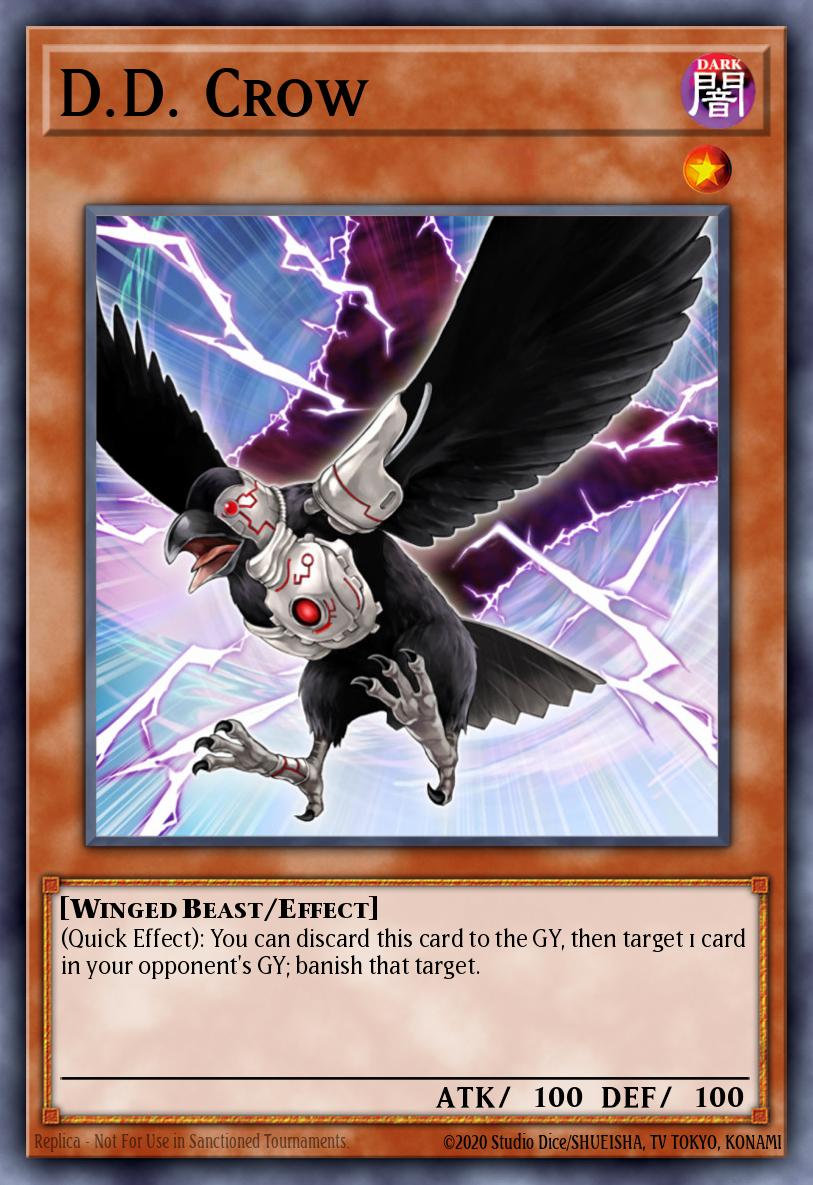
This category refers to hand traps that have targeted anti-graveyard effects. While Skull Meister and Ghost Belle & Haunted Mansion are included here, the best of them by far is D.D. Crow.
The main gimmick of Tearlaments is that most of their main deck monsters can perform a Fusion summon when sent to the graveyard (GY) by a card effect. While it can use materials on the field, in the hand, and even in the GY, the monster triggering the Fusion must also use itself in the GY as material, shuffling itself into the deck. This is where D.D. Crow shines. If Crow banishes the Tear name trying to fuse, the card resolves without effect, as that monster can no longer be used as material.
Skull Meister and Ghost Belle can fulfill a similar function and negate the effect outright. But there are two reasons why they’re inferior to Crow for this purpose. First, though they negate the effect, they leave the Tear name in the GY. Should another Fusion effect activate, that name is still available as Fusion material. Crow removes the card entirely while also functionally “negating” the Fusion. Second, Tearlaments are notorious for chainblocking – resolving multiple Trigger Effects, including the Tears’ Fusion effects, in a single chain such that the first effect cannot be responded to. Tears mill multiple cards at a time, so a Tear Fusion effect, a mill effect from an Ishizu card, and even a Tearlaments spell or trap all activate their effects at once. A Tear player can protect their Fusion by using it as Chain Link 1 and then other effects as Chain Link 2 onwards. In such a situation, the opponent could only activate Meister or Belle in response to the last effect, allowing the first effect to Fusion summon. By contrast, Crow does not inherently respond to anything, and is perfectly content to activate at the end of such a long chain and still target the first Tearlament card activating its effect.
Grave Guardians
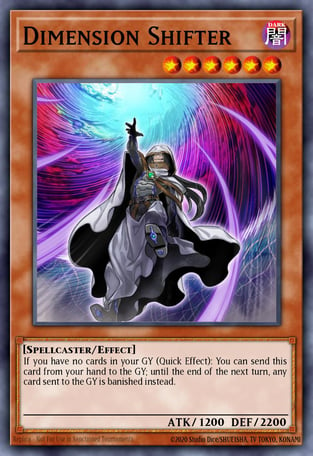
This category refers to floodgates (cards with a lasting preventative effect) that makes cards that would go to the GY banish themselves instead. Of these, Dimension Shifter is premium in that it is a hand trap that works going second, while Masked HERO Dark Law, Dimensional Fissure, and Macro Cosmos have more staying power.
Since Tearlaments need to hit the GY to activate their Fusion effects, it would obviously be detrimental to them if they could never hit the GY in the first place. Shifter can accomplish this for two turns, and on the opponent’s turn. But there are couple of caveats. First is Shifter’s condition of having no cards in the GY in order to activate it. Outside of a going-second situation, this can be a difficult condition to maintain. Tears are not the first deck that makes heavy use of the GY; many decks can’t afford to block Tears if it means that their own strategy is blocked too. And even a deck that doesn’t focus on the GY will often see cards go there eventually, making the activation condition difficult. Decks like Floowandereeze and Exosister can manage their GYs well enough to maximize Shifter, but the same can’t be said of every deck.
Fissure and Cosmos similarly block both graveyards, but at least they’re more flexible in allowing you to activate them. If you can set them up turn one, they will make life quite difficult for a Tear player. But unlike Shifter, they’re harder to use going second. Tearlaments Cryme and Primeval Planet Perlereino can both get rid of them before they even have a chance. Cosmos in particular is difficult to use as a trap. If you can bait out their S/T removal, though, Fissure can be decent going second.
Unlike Shifter, Fissure, and Cosmos, Dark Law’s banishing effect only affects the opponent. That gives the user more freedom in their own plays, but Dark Law itself is more complicated to bring out. If you’re not a HERO player, you can bring out Dark Law with any DARK monster and Mask Change II. If your deck naturally runs DARK monsters, and turning one into Dark Law won’t disrupt your endboard, then it can be an interesting tech to run. Good luck resolving it going second, though; in addition to Cryme, Tearlaments Rulkallos can negate Mask Change II, and Tearlaments Sulliek can negate Dark Law.
Banisher of the Radiance and Banisher of the Light are other possibilities, but they’re much harder to get out. They’re a potentially funny Branded Expulsion target, but there are much better monsters to summon with that trick.
Grave Lockers
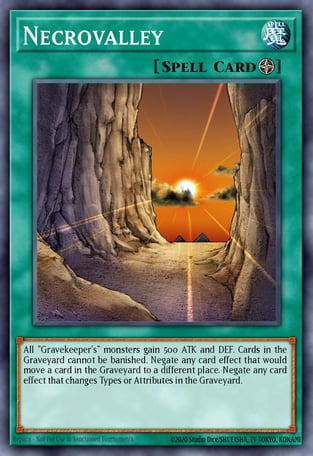
We’ve covered single-interaction GY hate, and we’ve covered floodgates that prevent cards from going to the GY. Now we’ll cover floodgates that “imprison” the GY, letting cards go there but not letting them do anything once there.
Necrovalley unbothered on the field is a death sentence for Tearlaments. Since Tears need to return from GY to deck to fuse, negating effects that move cards in the GY will lock down everything a Tear player wants to do. It even stops Keldo the Sacred Protector and Mudora the Sword Oracle from shuffling back anything in the GYs. Necrovalley is also surprisingly easy to access; it doesn’t just have Terraforming and Metaverse, but also Gravekeeper's Commandant to search it. Necrovalley is the signature card of a Gravekeeper deck, but theoretically any deck can play it if it doesn’t move cards in the GY. And if that deck doesn’t need its normal summon, it can even use Planet Pathfinder for additional Necrovalley searches. But Necrovalley shares the same going-second issues that the other floodgates mentioned have.
Abyss Dweller is also accessible, but in a different way. It’s a generic Rank 4 Xyz, so any deck with Level 4s can toolbox it out. It’s also a lingering effect that, once resolved, would remain even if the monster left the field. (By contrast, if Necrovalley leaves the field, it can’t apply its effect.) However, it can only do so for two turns, and again, its impact going second is limited.
Soul Drain and Shadow-Imprisoning Mirror can fall into this category too. Unlike Dweller, Soul Drain is continuous, so it lasts longer. But it can also be outed easier if you give the Tear player enough of an opportunity. Another drawback is that it affects yourself as well, so like Shifter and Necrovalley, you need to make sure your own deck doesn’t mind. As for Mirror, while it doesn’t target the GY specifically, it does stop all DARK monsters’ effects, preventing hand, field, and GY effects of the Tearlament cards. However, the Ishizu cards will still be able to function. Both Mirror and Soul Drain are Traps, so while they’re great going first, they’re harder to use going second.
No Purple Allowed
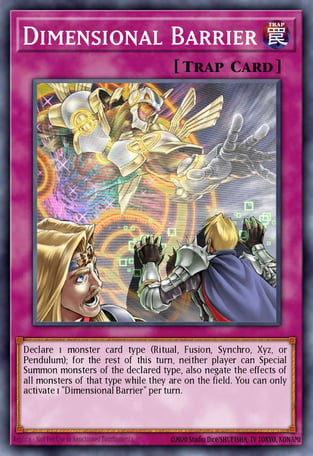
Rather than focus on the GY, this set of cards targets the Fusion mechanic itself. Cards of this type include Contact "C", Non-Fusion Area, and Dimensional Barrier.
Dimensional Barrier is the simplest example. It’s a Trap that turns off either Fusion, Synchro, Xyz, or Pendulum summoning for a turn. Naturally, you’ll want to call Fusion against Tears. If this card resolves, there’s really no workaround as it’s another lingering effect. However, it is a Trap that works best going first. Going second runs into Cryme and Perlereino again. Non-Fusion Area is also a Trap, but stays on the field for longer. A continuous floodgate means a more durable lock on Fusion summoning, but like Necrovalley, if it leaves the field it stops applying its effect.
Contact “C” is an odd alternative. Its effect is to drop itself onto the opponent’s board and prevent Extra Deck summons unless it is used as material. The Tear Fusions, and even their more generic Fusion targets like the Shaddoll monsters, don’t really use EARTH or Insect monsters as material, so this is theoretically another floodgate against Tears. However, unlike a previous Fusion meta threat, Branded, Tears can afford to run and summon a few Link monsters. So it’s quite easy to just Link Contact “C” away and then continue your Tear plays.
The way to use Contact “C,” then, is not as a continuous floodgate, but more like a traditional hand trap. On the Normal Summon of Tearlaments Reinoheart or Tearlaments Merrli, chaining Contact “C” to their effect activation will still stop any Tears they mill that time. If Tearlaments Scheiren or Tearlaments Havnis activate their effects from hand, summon themselves, and mill a Tear, Contact “C” will still be able to drop just in time to stop a Fusion summon. But then you’d have to weigh the danger of giving Tears Link material. Based on how deckbuilding solidifies going forward, the cost may or may not outweigh the benefit of adding another cockroach to your deck.
Silent Elimination
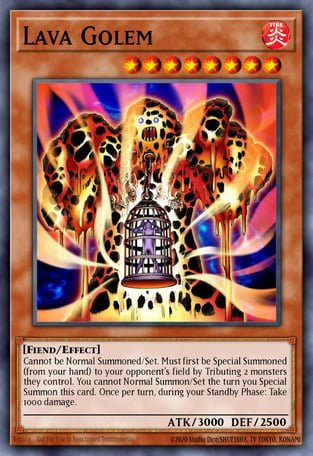
The fifth category I’m going to formalize here is a trio of cards with which you might be quite familiar: The Winged Dragon of Ra - Sphere Mode, Lava Golem, and the Kaiju archetype. Of course, these are great removal options against many other decks, but they have particular utility against Tearlaments. This is because all of the Tear Fusion monsters have an effect when they’re sent to the GY, even from the field. Tearlaments Kitkallos mills five, Rulkallos just comes right back to the field, and Kaleidoheart not only returns to the field, but also does a Foolish Burial for a Tearlaments monster. If not done properly, outing a Tear monster only benefits the Tear player. That’s why Ra, Lava Golem, and the Kaijus are so important – they can get those powerful Fusions off the field without letting the Tear player extend off of them. Traps like Cryme and Sulliek can’t activate if the user doesn’t control a Tearlament monster, so using these removal methods hits two birds with one stone.
In fact, all the Tearlament cards, not just monsters, trigger an effect when sent to the GY, so a card like Evenly Matched has great value. However, unlike Ra, Golem, or a Kaiju, Evenly can be responded to, especially with a card like Cryme. If you can somehow bait out Cryme first, though, then Evenly can do a devastating number on the board.
Other Groups
Mass negation like Dark Ruler No More and Forbidden Droplet can be helpful, but are less effective than in previous formats. This is because Tears spread their disruptions across their Monster Zone, Spells and Traps, hand, and GY. Their interactions are truly comprehensive, so resolving either of those Spells would only be the beginning. Again, Cryme will make things difficult for those cards as well. Even though Droplet can get around it, it requires sending a Trap for cost. This can be difficult; Traps are usually run at lower ratios, and the ones that are run have high impact in their own usage, like Evenly Matched or Infinite Impermanence.
The last group of cards worth mentioning is the Ishizu cards. That may sound ironic, given that they’re the butter to Tearlaments’ bread, but if you look at their effects, they’re just as useful against Tear as they are for them. They have Quick Effect graveyard shufflers, a Compulse-like hand trap that triggers off of a mill, and even a Rank 4 engine to make Dweller or Number 41: Bagooska the Terribly Tired Tapir. The Ishizu cards are a big reason why the Tearlaments mirror match is so intricate and skillful. Be careful using their milling effects, keeping in mind that they can mill both your deck and the opponent’s.
Final Thoughts
Of all these potential techs, I think Shifter, Dweller, and the Ishizu cards are the best. Dweller is relatively accessible, Shifter is a going-second lifeline and Ishizu’s history speaks for itself. But certain decks will get more use out of certain techs. If you’re already playing Boarder Stun, you’ll want to make sure you have floodgates like Necrovalley or Soul Drain. If you’re already playing HEROes, you’ll want to prioritize getting Dark Law on the field with regular Mask Change. If you’re playing an OTK deck like Numeron, you’ll already be familiar with Kaijus and Lava Golem. Try as much as you can, as long as it synergizes with your deck (and doesn’t break your bank). But don’t place too much hope in any one “silver bullet” here. Even after all these hate cards, Ishizu Tear is still “Tear Zero” for a reason.




